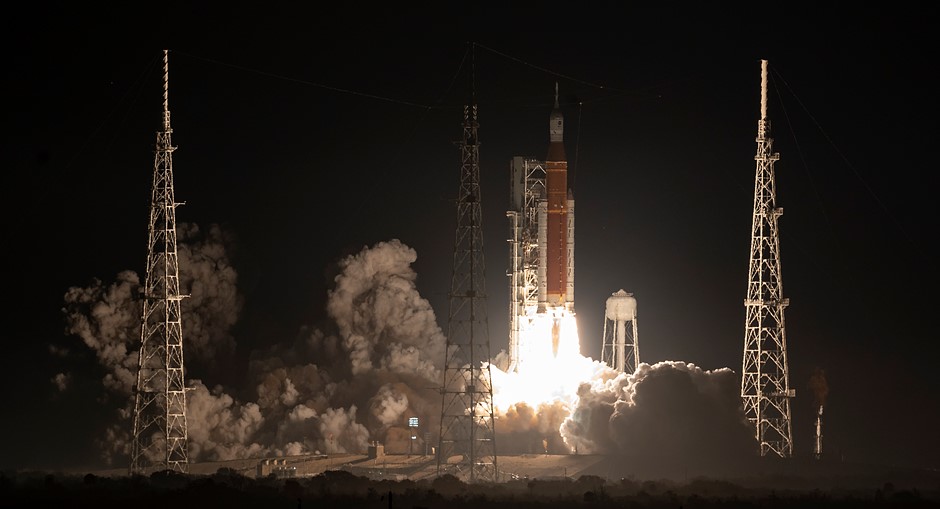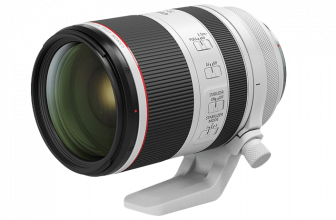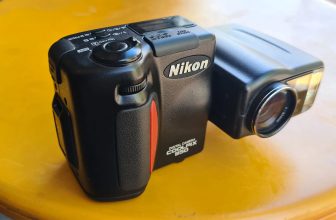
NASA has outlined the cameras aboard the Artemis I rocket and Orion spacecraft during Orion’s more than 64,000km (40,000 mi) journey beyond the Moon. The onboard cameras will collect important engineering data and deliver impressive new views of ‘humanity’s return to the Moon.’
Aboard Artemis I and Orion, there are 24 cameras, including eight on the Artemis I Space Launch System (SLS) and 16 on Orion. The cameras will document major mission events, such as liftoff, ascent, solar array deployment, external rocket inspections, landing and recovery. The cameras will also photograph Earth and the Moon.
On the rocket, which successfully launched early this morning from Kennedy Space Center, there is a quartet of cameras around the engine section that point up toward Orion, a pair of cameras at the intertank near the top of the boosters and the remaining two cameras are on the launch vehicle stage adapter. The eight cameras will cycle through a preprogrammed sequence during launch and ascent, including capturing booster separation and core stage separation.
On Orion, an external camera mounted on the crew module adapter will photograph the SLS rocket’s ascent, delivering a ‘rocket cam’ view. Four cameras attached to Orion’s solar array wings will help engineers monitor Orion’s health and capture a selfie view of the spacecraft with Earth or the Moon in the background.
 |
| The cameras aboard the Orion spacecraft. Credit: NASA. Click to enlarge. |
‘Each of Orion’s four solar array wings has a commercial off-the-shelf camera mounted at the tip that has been highly modified for use in space, providing a view of the spacecraft exterior,’ said David Melendrez, imagery integration lead for the Orion Program at NASA’s Johnson Space Center in Houston.
The solar array wings are adjustable to optimize sunlight collection, which Orion uses to power itself, and point cameras at different parts of the spacecraft for inspection and to capture images of its surroundings.
 |
| ‘NASA’s Space Launch System rocket carrying the Orion spacecraft launches on the Artemis I flight test, Wednesday, Nov. 16, 2022, from Launch Complex 39B at NASA’s Kennedy Space Center in Florida. NASA’s Artemis I mission is the first integrated flight test of the agency’s deep space exploration systems: the Orion spacecraft, Space Launch System (SLS) rocket, and ground systems. SLS and Orion launched at 1:47am ET from Launch Pad 39B at the Kennedy Space Center.’
Credits: NASA/Bill Ingalls |
A specialized camera on the crew module adapter is used for optical navigation. The camera will also help pinpoint Orion’s location in space and photograph the Moon during Orion’s closest approach. There are wireless cameras inside Orion to document the perspective of the astronauts. A pair of external high-speed cameras monitor parachute operations.
The cameras will also capture video, ranging from standard-definition up to 4K resolution. Each camera and its formats are tailored to its intended purpose and available bandwidth. Due to restricted bandwidth, mission-critical data will be prioritized and some high-quality views may not be available until long after they’re captured. Further, each camera has been optimized to capture imagery of the spacecraft, rather than deep space. NASA points out that ‘imagery for the Artemis I flight will depend on a variety of factors such as lighting, spacecraft orientation, and communication capabilities during different mission phases.’
‘A lot of folks have an impression of Earthrise based on the classic Apollo 8 shot,’ Melendrez said. ‘Images captured during the mission will be different than what humanity saw during Apollo missions, but capturing milestone events such as Earthrise, Orion’s farthest distance from Earth, and lunar flyby will be a high priority.’
Orion also includes three in-cabin cameras as part of a technology demonstration, Callisto. The in-cabin cameras will be used to test video conferencing and ‘may enhance the public’s ability to imagine themselves inside Orion.’
During NASA’s Artemis missions, NASA will land the first woman and the first person of color on the Moon. To learn more about the Artemis Program and its goals, visit NASA.
creditSource link






